Very Dewy Lessons
On a densely-foggy Monday morning past, the vegetation along the canal between the South Field and the South Peninsula was draped with many hundreds (no exaggeration) of dew covered spider webs. Tuesday morning dawned slightly foggy. I headed to the same spot expecting to see many hundreds of spider webs laced with droplets of dew. Not only was there no dew, but close examination revealed very few spider webs.
1- I learned that a little bit of fog just won’t dew it 🙂 I would assume that in addition to heavy fog at dawn, a specific combination of the overnight temperatures, the humidity, and the wind speed (not too high), are needed to create the magical conditions that I enjoyed on Monday morning. Can you say dew point?
2- I have no idea as to why there seemed to be fewer spider webs by a factor of one hundred on the morning without the dew. Do you?
What’s Up?
On Tuesday morning, photography was on the slow side. I created 281 images and kept only five, and one of those was for educational purposes only. Again, I spent many hours on the NANPA/ASMP issue and will be doing the same every day in the near future.
Today is Wednesday 7 December 2022. I will be heading down to the lake again this morning. This blog post took about 90 minutes to prepare and makes two hundred fifty-five days in a row with a new, educational post just for you. Wherever you are and whatever you are doing, I hope that you too have a great day.
Please remember to use the B&H and Amazon links that are found on most blog pages and to use the BIRDSASART discount code at checkout when purchasing your new gear from Bedfords to get 3% back on your credit card and enjoy free second-day air FedEx. Please, also, consider joining a BAA IPT. You will be amazed at how much you will learn!
You can find some great photo accessories (and necessities, like surf booties!) on Amazon by clicking on the Stuff tab on the orange/yellow menu bar above. On a related note, it would be extremely helpful if blog-folks who, like me, spend too much money on Amazon, would get in the habit of clicking on the Amazon logo link on the right side of each blog post when they shop online. As you might expect, doing so will not cost you a single penny, but would be appreciated tremendously by yours truly. And doing so works seamlessly with your Amazon Prime account.
Please remember that if an item — a Delkin flash card, or a tripod head — for example, that is available from B&H and/or Bedfords, is also available in the BAA Online Store, it would be great, and greatly appreciated, if you would opt to purchase from us. We will match any price. Please remember also to use my B&H affiliate links or to earn 3% cash back at Bedfords by using the BIRDSASART discount code at checkout for your major gear purchases. Doing either often earns you free guides and/or discounts. And always earns my great appreciation.
Today’s NANPA Tidbit
Via e-mail From Ron Levy
Beth Huning, Susan Day, et. al.,
Arthur’s last email makes a lot of sense, and I would like to see the “merger’ up for a vote. Only a small handful of questions were addressed on the video meeting last week, and it did seem like more of a marketing pep talk than a deep dive into the questions that were raised.
As a long-standing ASMP member (30+ years) and relatively recent NANPA member, I see the perceived benefits for both, independently and together. But it seems that this matter is far too massive a decision to make without member votes. Regardless of having a board that decides smaller, day-to-day or week-to-week issues as expediently as possible, this is a major change with far-reaching potential issues and consequences, deserving of a more comprehensive member input.
There is no reason to waste time and money on formal legal defenses for either side if a more open set of meetings can avoid costs and unify NANPA again.
Best,
Ron
|
|
|
This image was created on the foggy morning of 5 December along the slope of the canal the abuts the South Peninsula down by the lake near my home at ILE. I used the no longer available Induro GIT 204 tripod/Levered-clamp FlexShooter Mini-mounted Canon EF 180mm f/3.5L Macro USM lens with the Metabones Canon EF/EF-S Lens to Sony E Mount T Smart Adapter (Fifth Generation) and The One, the Sony a1 Mirrorless Camera body. ISO 1600: 1/1000 second at f/8 (stopped down 2 1/3 stops) in Manual Mode. The exposure was determined using Zebra technology with ISO on the thumb dial. The raw file brightness as determined by RawDigger was shown to be 1/3 stop too dark. Keep reading to learn why. AWB at 8::19:52am on a densely foggy morning. Manual focus with (red) focus peaking. Click on the image to enjoy a larger version. Image #1: Dew-covered spider web on breezy morning |
The Times They Have Changed
Many decades ago, a dew-covered spider web image created by John Shaw graced the cover of Natural History Magazine. The dew drops sparkled like diamonds and were set against a smooth, matte grey background. By e-mail, John remembered that the image was made with his Nikkor 200mm micro lens and Kodachrome 25 (Kodachrome 64 was his “high speed film”). He had no idea on the shutter speed and the aperture, but since he was working with ISO 25 film, it is easy to figure out several things:
1- He had stopped down at least a bit.
2- He had used a very slow shutter speed (most likely with a shutter release cable).
3- In addition to the foggy conditions that caused the dew, there had been zero wind that morning.
As I marveled at the hundreds of dew-covered webs on Monday morning, John’s classic image came to mind. My first thought was “It’s too breezy to make a good image.” But then I realized that I was using digital, and that digital offered almost unlimited ISO settings that would allow me to freeze the movement of the web and stop down a bit as well. So, I set up my macro rig and went to work. I wound up at ISO 1600: 1/1000 second at f/8. Thanks to the many miracles of digital photography (including Topaz DeNoise) I had 5 1/3 stops more ISO to work with.
I found a fairly flat dew-covered web with a fairly dark background. As the biggest challenge was getting the sensor square to the web, the tripod was moved many times. With focus peaking, the red in-focus overlay was shifting constantly as the web moved in the wind. I would shoot short bursts when the overlay covered the center of the web. Because the web was not perfectly flat, all of the images had one corner of the web that was beyond the range of the depth of field. With Image #1, the lower left corner fit that category. I am not sure if I like it as the viewer’s eye is moved around the frame by the shifting sharpness, or if I hate it because all of the dew drops are not sharp.
What do you think?
|
|
|
This is a square crop of the image above. Image #2: Dew-covered spider web on breezy morning — cropped to a square |
The Square Crop Solution
To eliminate the out of focus dew drops in the lower left corner, I executed a square crop that moved the center of the web from the upper left to the lower left. There are still a few soft dew drops in the lower left corner but they are far less extensive than in image #1. One thing is for sure, on the next foggy morning I will not delay getting down to the lake!
Please leave a comment and let us know which of the two versions you like best and why you made your choice.
The Homer IPTs
If you are considering attending one of the great trips below, please contact me via e-mail and I will do my very best to make it happen.
|
|
All images from Homer or Kachemak Bay, AK |
2023 Homer/Kachemak Bay Bald Eagle IPTs
IPT #1: MON 20 FEB 2023 through the full day on FRI 24 FEB 2023. Five full days/20 hours on the boat: $5500.00. Limit 5 photographers/Openings: 2.
IPT #2: SAT 25 FEB 2023 through the full day on THURS 2 MAR 2023. Six full days/24 hours on the boat: $6600.00. Limit 5 photographers/Openings: 3.
IPT #3: FRI 3 MAR 2023 through the full day on TUES 7 MAR 2023. Five full days/20 hours on the boat: $5500.00. Limit 5 photographers. Openings: 2.
Save $1,500.00 by doing back-to-back trips. Save $2500 by doing all three trips.
These trips feature non-stop flight photography as well as many opportunities to create both environmental and point-blank portraits of one of North America’s most sought-after avian subjects: Bald Eagle (Haliaeetus leucocephalus). Other reliable subjects will include Sea Otter, Glaucous-winged and Short-billed (formerly Mew) Gulls.
In addition, we should see Common Murre, Black Guillemot, Pelagic Cormorant, two or three species of loons, and a smattering of ducks including two species of merganser, all three scoters, Common and Barrow’s Goldeneyes, Bufflehead, Harlequin, and Long-tailed Ducks. Close-range photographic chances for these species will require a ton of good luck. Some of these species, especially when in flocks, can, however, often be used effectively when creating bird-scapes.
If we need to be out early, we will be the first boat out. If conditions are great, we will stay out. And when there is a chance for sunset silhouettes, we will stay out and be in the right spot.
We will be traveling through gorgeous wilderness country; landscape and scenic opportunities abound.
Also featured is a professional leader, often referred to as the world’s most knowledgeable bird photography trip leader, who is conversant in Canon, Nikon, and Sony.
|
|
All images from Kachemak Bay in 2022! |
What You Will Learn
You will learn practical and creative solutions to everyday photographic problems. You will learn to see the shot, to create dynamic images by fine-tuning your compositions, to best utilize your camera’s AF system, and how to analyze the wind, the sky conditions, and the direction and quality of the light. This is one of the very few trips Homer trips available where you will not be simply put on the birds and told to have fun. You will learn to be a better photographer. But only if that is what you want.
You will learn to get the right exposure when it is sunny, when it cloudy-bright, when it is cloudy, when it is cloudy-dark, or when it is foggy. Not to mention getting the right exposure when creating silhouettes.
You will learn to make pleasing blurs working in manual mode and to create silhouettes working in Shutter Priority mode.
Most importantly you will learn to pick your best flight images from tens of thousands of images.
You will enjoy working with the two best and most creative boat captains on their sturdy, photography-spacious, seaworthy, open-deck crafts.
The second and third IPTs are the only Bald Eagle workshops that feature an incredibly helpful first mate.
Only five photographers (not the usual six), plus the leader.
Small group Photoshop, Image Review, and Image Critiquing sessions.
|
|
All images from Homer or Kachemak Bay, AK |
What’s Included
One four-hour or two two-hour(+/-) boat trips every day (weather permitting), all boat fees and boat-related expenses (excluding tips), ground transportation to and from the dock and back to the hotel each day, in-the-field instruction and guidance, pre-trip gear advice, small group post-processing and image review sessions, and a thank you dinner for all well-behaved participants. Airport pickup if possible)
What’s Not Included
Your airfare to and from Homer, AK (via Anchorage), the cost of your room at Land’s End Resort, all personal items, all meals and beverages, and tips for the boat captain and/or the first mate.
Please Note
On great days, the group may wish to photograph for more than four hours. If the total time on the boat exceeds 20 hours for the five-day trips, or 24 hours for the second trip, the group will share the additional expense at a rate of $225/hour.
Some folks may wish to rent their own vehicle to take advantage of local photographic opportunities around Homer.
Deposit Information
A $3000 non-refundable deposit/trip is required. You may pay your deposit with credit card or by personal check (made out to BIRDS AS ART) and sent via US mail only to Arthur Morris. PO Box 7245. Indian Lake Estates, FL 33855. Your balance, due 90 days before the date of departure, is payable only by check as above.
In Closing
I have been going to Homer off and on for close to two decades. Every trip has been nothing short of fantastic. Many folks go in mid-March. The earlier you go, the better the chances for snow. The only way to assure that you are on the best of the three trips is to sign up for all three. Can you keep up with me? If you have any questions, or are good to go for one, two, or all three trips, please let me know via e-mail or give me a call on my cell phone at 863-221-2372.
Typos
With all blog posts, feel free to e-mail or to leave a comment regarding any typos or errors.

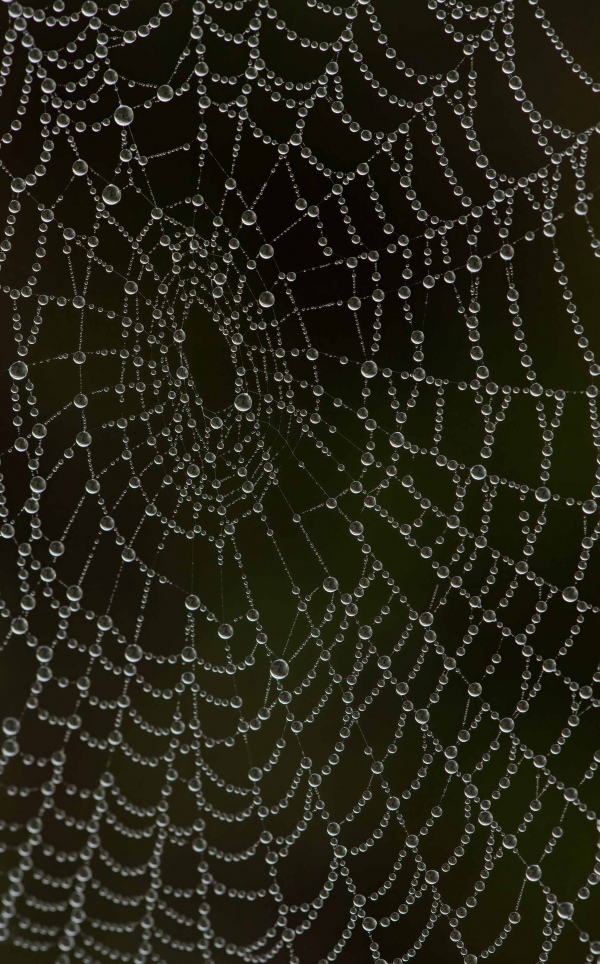
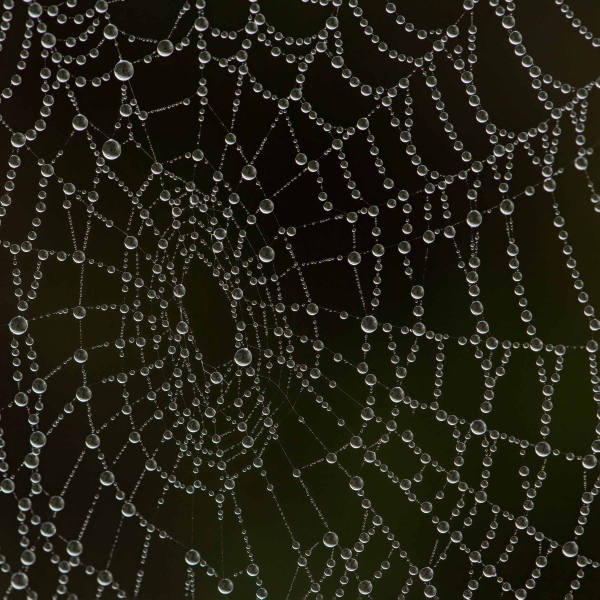
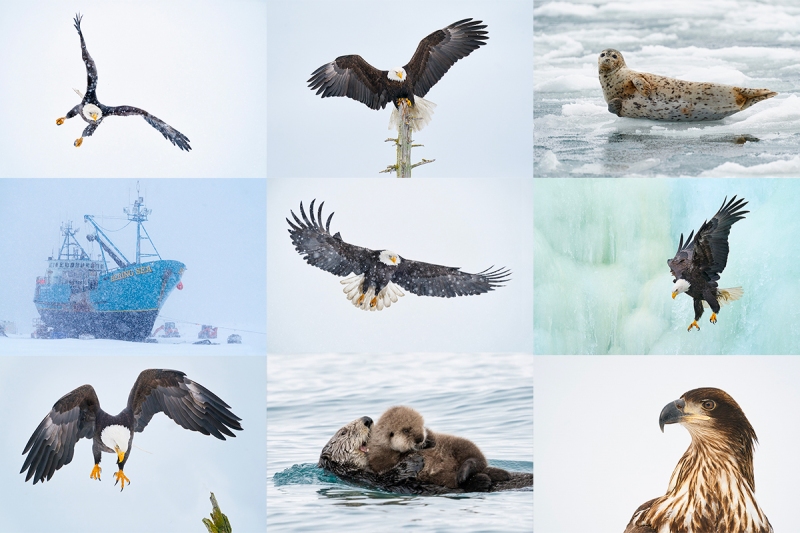
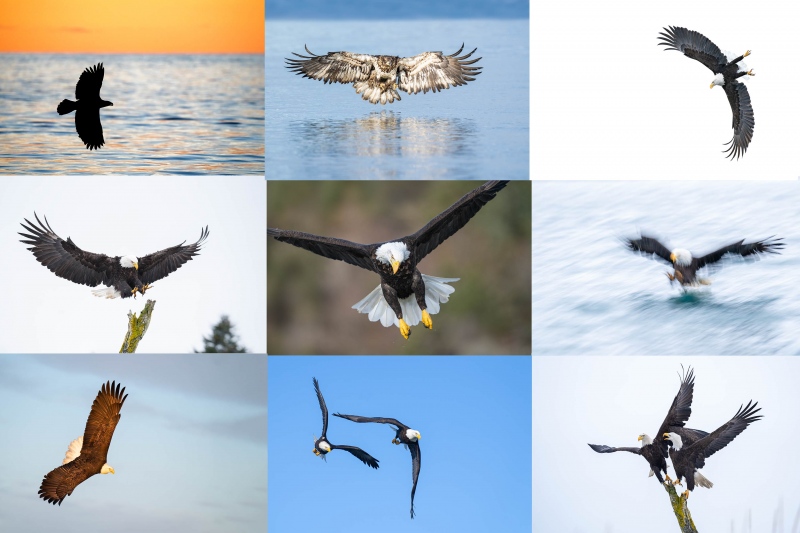
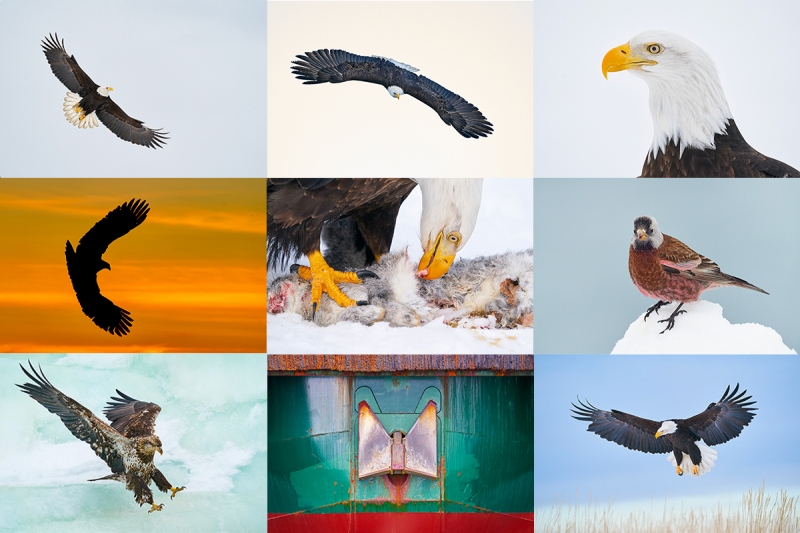













Great picture!
I wonder what you could do with a full set of those Godox M12 flashes??? Each small flash also comes with complete set of gels. The mind boggles! Wonderful image. I prefer the extra depth in no. 1.
Thanks. I have gone completely away from flash for many years. Who knows what the future will bring?
with love, artie
I like image #1. The OOF lower left doesn’t bother me at all, and in fact provides some depth to the image.
My preference is image #1. For me it draws my eye to the center of the web and ther soft focus at the bottom left actually encances the illusion of depth.
Ted
That’s a killer web image sir! I have all of John Shaw’s books. I consider them to be “must haves” for any nature photographer. I love capturing floating bubbles as ISO 6400 🙂
Thanks, Andrew. I have them too. I just need to find them. Shoot me two or three of those floating bubbles images.
with love, artie
Artie
Dew Point…guess i can say it 🙂
Image #1 my eye did scan the image and quickly found the oof droplets and in image #2 better without them. But really cool to see the amazing work of a spider. I love the art. The winds could have taken the webs out? A guess
I wonder what would happen with the droplets if one would take a bright flashlight along and shine it at the web in different ways to create a sun like affect if one would see the star bursts? It would be fun to play around.
Always with love b
Thanks, Bob. It was breezy not windy 🙂 How about a touch of fill flash? That might work if I actually had a flash that works with Sony…
In Homer, we might get some hoar frost when there is fog …
with love, artie
Artie
That would be interesting in everything. Would you be doing macro shots of this or all the above?
In my flashlight thought one could control the light where in fill flash you can’t as easy, either way it would be fun to see any results. Now you need a spider in your web 🙂
Always with love b
Thanks, again Bob. There was a small spider in the web but it broke up the patterns of the drops and would have needed a ton more d-o-f; I purposely avoided it.
with love, a